She nodded. “I’m glad you see the symbolism too.”
He pointed to the photo of Cassandra Coyle. “Tell me about this victim.”
“A twenty-six-year-old woman, found dead in her bedroom. Both her eyes were surgically removed postmortem. Her eyeballs were placed in her open palm.”
“The classic portrayal of Lucy, patron saint of the blind. She was a virgin who devoted herself to Christ, and when she refused to marry, the man she was betrothed to had her thrown in prison and tortured. The torturer dug out her eyes.”
“Once you recognize it, the symbolism practically screams at you. One victim was stabbed with arrows, like Saint Sebastian. One victim had her eyes cut out, like Saint Lucy.”
“What does Boston PD think?”
“I haven’t mentioned the symbolism to them yet. I wanted to hear your reaction first. You know the history of the saints, so you’d have the answers.”
“I know the liturgical calendar, and I’m familiar with the lives of most of the saints. But I’m not any sort of expert.”
“No? I remember you explaining in great detail the iconography of sacred art. You told me that when you see an old man holding keys, it’s almost certainly a depiction of Saint Peter, holding the keys to heaven. That a woman with an ointment pot is Mary Magdalene, and a man with ragged clothes and a lamb is John the Baptist.”
“Any art historian can tell you that.”
“But how many art historians are as well versed as you are in religious symbolism? You might be able to help us identify this killer’s other victims.”
“Are there other victims?”
“I don’t know. Maybe we just haven’t recognized them yet. And that’s where we need your help.”
For a moment he said nothing. She knew why he was hesitating. It was because of their history together as lovers. A year ago they had gone their separate ways, and the wound from that separation had not yet healed. It was still fresh, still painful. She both hoped and dreaded that he would agree to her request.
Calmly he reached for his coat and scarf. So this is his answer, she thought; a wise decision, of course. It was far better that he walk away now, but she was left heartsick as he rose to his feet. Would there ever be a day when she’d look at Daniel Brophy and feel nothing? Certainly this was not that day.
“Let’s go now,” he said. “I’ll meet you at the church.”
She frowned at him. “The church?”
“If I’m going to advise you, we should start with the basics. I’ll see you there.”
How many times had she huddled in a pew in Our Lady of Divine Light, wallowing in her own misery? She was not a believer, yet she longed for guidance from some higher authority, and she drew comfort from the familiar symbols she saw everywhere in this building: The votive candles, flickering in the shadows. The altar, draped in rich red velvet. The stone Madonna, gazing down benignly from her alcove throne. How many times had she studied the figures of saints in the stained-glass windows and pondered their torments? Today the light that shone through those windows cast a cold and wintry gleam on Daniel’s face.
“I haven’t taken enough time to really study the glasswork in these windows, but they’re beautiful, aren’t they?” he said, as he and Maura stood admiring the first window. In each of the four corners was a different saintly figure. “I was told these aren’t very old — only a hundred years, not much more. They were crafted in France, in the traditional style, similar to what you can find in medieval churches all across Europe.”
She pointed to the top left corner. “Saint Sebastian.”
“Yes,” said Daniel. “He’s easy to identify by the manner of his martyrdom. He’s often depicted tied to a post, with his body pierced by arrows.”
“And the man in the upper right corner?” she asked. “Which saint is he?”
“That would be Bartholomew, the patron saint of Armenia. Do you see the knife he’s holding? It’s the symbol of his martyrdom.”
“He was stabbed to death?”
“No, his death was far worse. Bartholomew was flayed alive as punishment for converting the king of Armenia to Christianity. In some paintings, he’s depicted with his own excised skin hanging over his arm like a bloody cloak.” Daniel gave her a rueful smile. “Not surprisingly, he’s the patron saint of butchers and tanners.”
“Who is the saint in the bottom left corner?”
“That’s Saint Agatha, yet another martyr.”
“What’s on the plate she’s carrying? They look like loaves of bread.”
“They’re not, um, actually loaves of bread.” He paused, his discomfort so apparent that she frowned at him.
“How was she martyred?”
“Her death was particularly brutal. When she refused to honor the old Roman gods, she was tortured. Forced to walk on glass and burned with live coals. Finally, they ripped off her breasts with pincers.”
Maura stared at the objects resting on the plate, which she now knew weren’t loaves of bread but the excised breasts of a mutilated woman. She shook her head. “God, these stories.”
“They’re horrifying, yes. But they can’t be entirely unknown to you. Since your adoptive parents were Catholic.”
“Only in the nominal sense. Attendance at Christmas Mass was about the extent of their involvement, and by the time I was twelve, I’d stopped going to church at all. I hadn’t set foot in one in years until...” She paused. “Until I met you.”
They stood silent for a moment, each avoiding the other’s gaze, both of them staring ahead at the window, as if all the answers, the remedies to their pain, were etched in stained glass.
“I never stopped loving you,” he said softly. “I never will.”
“Yet we’re not together.”
He looked at her. “I’m not the one who said goodbye.”
“What choice did I have when you believe so completely in this ?” She nodded at the window of saints, at the altar and the pews. “Something I can’t believe in, won’t believe in.”
“Science doesn’t have all the answers, Maura.”
“No, it certainly doesn’t,” she said with a note of bitterness. Science didn’t explain why some people chose to be miserable in love.
“There’s more to consider than just our happiness,” he said. “There are people in this parish who depend on me, people in deep pain who need my help. And there’s my sister. She’s still alive, still healthy after all these years. I know you don’t believe in miracles, but I do.”
“Medical science cured her leukemia. Not a miracle.”
“And if you’re wrong? If I go back on my word, leave the Church, and my sister gets sick again...”
He’ll never forgive himself, thought Maura. He’ll never forgive me.
She sighed. “I didn’t come here to talk about us.”
“No, of course not.” He looked up at the window. “You’re here to talk about murder.”
She refocused on the stained glass, on the fourth saint in the window, yet another woman who’d chosen misery. This saint she did not need help to identify; she already knew her name.
“Saint Lucy,” she said.
He nodded. “Carrying a plate with her eyes on it. The eyes dug out by her torturers.”
Outside, sunlight suddenly broke through the clouds and lit up the window, suffusing the glass with colors as rich as jewels. Maura frowned at the four figures gazing from the window. “They’re both here, in the same window. Sebastian and Lucy. Is it possible he’s been in this church and stood in this very spot?”
“The killer?”
“It’s like we’re looking at his storyboard, and here are two of his victims. A man pierced with arrows. A woman with her eyes cut out.”
Читать дальше
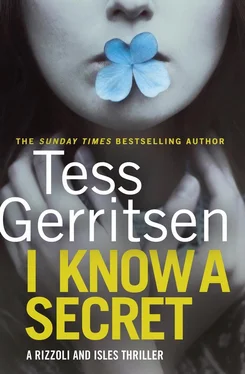

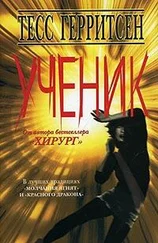
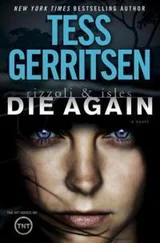
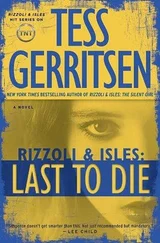
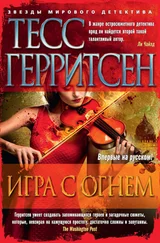
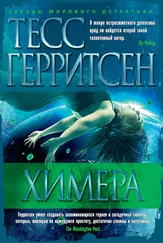
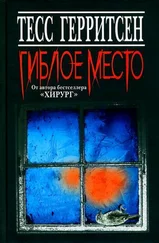
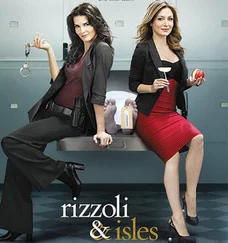
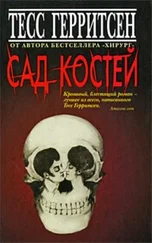
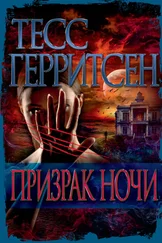
![Тесс Герритсен - Считать виновной [litres]](/books/395939/tess-gerritsen-schitat-vinovnoj-litres-thumb.webp)
![Тесс Герритсен - Двойник [litres]](/books/427680/tess-gerritsen-dvojnik-litres-thumb.webp)